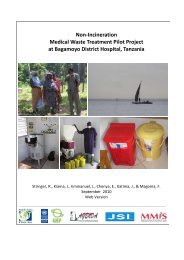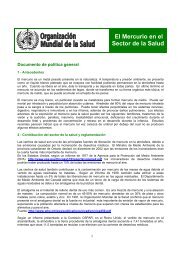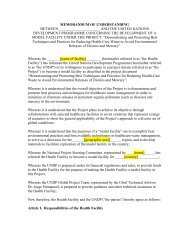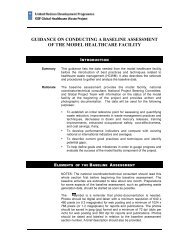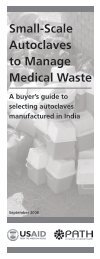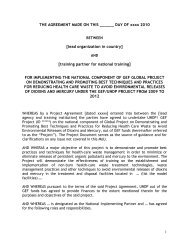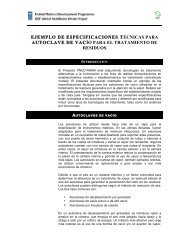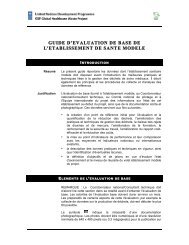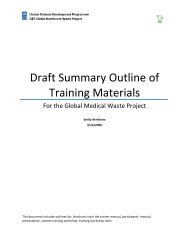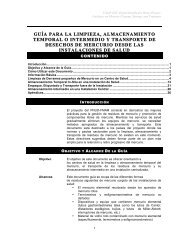Latvia
Latvia
Latvia
Create successful ePaper yourself
Turn your PDF publications into a flip-book with our unique Google optimized e-Paper software.
Health systems in transition<br />
<strong>Latvia</strong><br />
Health care financing<br />
• Development of a “single pipe” health financing mechanism (as it has<br />
been termed by the World Bank). This refers to health care financing<br />
centralization that occurred through two simultaneous processes: (a) the<br />
gradual dismantling of the regional “sickness funds”, the activities of which<br />
were taken over by the SCHIA, which began to operate as a single pooler<br />
of funds for health care, together with its territorial branches; and (b) the<br />
channelling of nearly all funds for health care through the SCHIA (involving<br />
the elimination of direct budget transfers from the Ministry of Health to<br />
state agencies and special health programmes).<br />
• Introduction of DRG or Price–volume–quality (PVQ) payments for hospital<br />
services. Hospitals are currently paid on the basis of a combination of casebased<br />
payments by diagnosis group, a per diem payment, and additional<br />
payments for medical and surgical interventions. Prospective payments<br />
based on DRGs are in the process of being developed.<br />
• Introduction of PHC payment systems based on capitation and fund holding.<br />
Two pilot PHC models were introduced in parallel: one in Riga, and one in<br />
the rest of the country (the “rural” model). The main difference between the<br />
two models centred on who the fund holder was for specialists’ payments.<br />
In the Riga model, these funds were held by the SCHIA. In the rural model,<br />
GPs were fund holders of the full amount of funds designated for specialists,<br />
so that with each referral, money followed the patient from the GP to the<br />
specialists to cover all specialist services provided. Both models received<br />
intense criticism. In the Riga model, as GPs had no control over capitation<br />
funds intended for specialist services; they faced the incentive to minimize<br />
their work load by referring patients to specialists. The result was that waiting<br />
lists for specialist services significantly increased. In the rural model, GPs<br />
faced the incentive to provide as many services themselves so as to minimize<br />
referrals to specialist services and retain as much as possible of the funds<br />
themselves, possibly at the expense of the health of the patient.<br />
• As of January 2006, following the “Regulation of the Cabinet of Ministers<br />
of 2004 on Organization and Financing of Health Care” and its amendments<br />
in 2005, a single PHC payment mechanism was introduced for the entire<br />
country. Its development was based on lessons learned from the two pilot<br />
projects. According to the new system, the GP is a gatekeeper and fund<br />
holder for capitation funds; however, these are much smaller and cover far<br />
fewer interventions. In addition, some measures have been introduced by<br />
the SCHIA to ensure stability in terms of GP revenue, and to strengthen GP<br />
gatekeeping. All procedures that can be carried out at the primary care level<br />
are determined by the abovementioned Regulations of 2004.<br />
220





